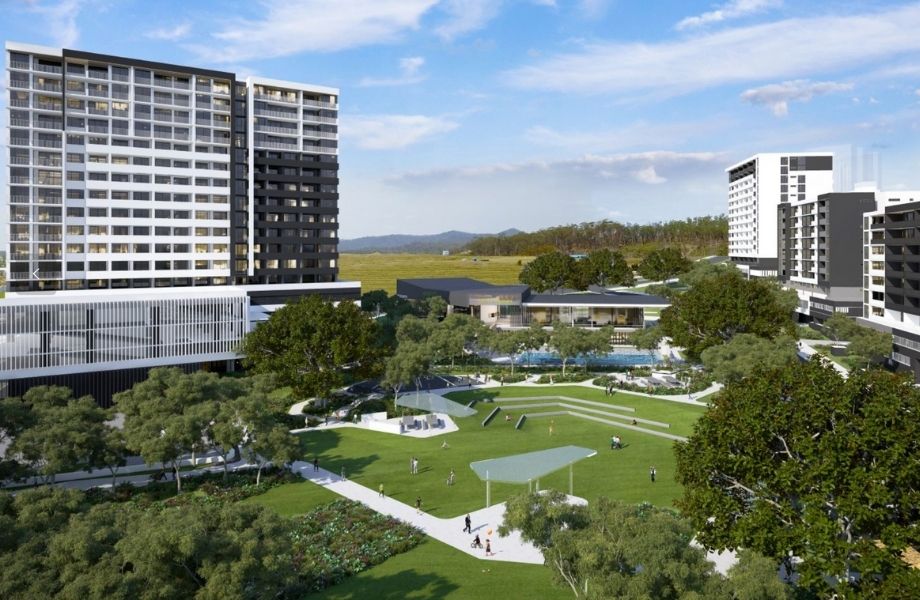Resources
Newsletter
Stay up to date and with the latest news, projects, deals and features.
SubscribeAustralia’s population growth is at its lowest level for more than a hundred years.
Australia will receive one million less international migrants during 2021, while an uptake in working-from-home have caused people to make decisions about where they want to live based less on commuting and more on lifestyle.
These factors create an environment that government and developers must consider carefully as they conceive and plan projects, Cottee Parker Architects principal Daniel Potts said.
“The need to create well-formed, thoughtful and effective residential and commercial developments has never been greater,” he said.
Potts said Cottee Parker Architects were currently working on several precincts throughout Queensland, the greater Sydney and Perth regions, and Melbourne.
They included suburban, retail and airport precincts, underlining that precincts came in all shapes and sizes, he said.
Central to success is community and the creation of precincts that serve as the hub, Potts said.
“Developments which address community need and demand will continue to be economically sustainable beyond their inception period,” he said.
“An early and enduring example, we were involved in is the initial masterplan designs of the James Street precinct in Brisbane’s Fortitude Valley.
“Over the years this precinct remains a benchmark for urban renewal precincts in Australia, due to an adaptable design program which continues to engage those who invest in, live in, work in and visit it.”

A precinct approach to planning a development helps community and economic sustainability over a much longer term, Potts said.
This includes a heightening of the development’s relevance to all stakeholders as well as creating a more attractive proposition for investors domestically and internationally.
“Well-considered precincts also ensure high occupancy of offices and retail spaces,” he said.
“Without that we run the risk of creating a white elephant—and there are many examples of just that.”
The engagement of all stakeholders, including residents, business and government, is crucial in the planning and the ongoing use of a precinct. Empowering a community of users to continue to curate their precinct is a great example of adaptability and resilience, he said.
Potts said the current climate, as we emerge from the pandemic, should be a period of opportunity.
“We can use to the time of low migration to rethink our approach to precincts, so we are ready for the upswing,” he said.
“We can equip our communities, investors and enablers with the tools they need.”
Potts said aspects to be considered included inclusiveness—that universal design was not an add-on, but simply good design which supports a community that looks after its members regardless of ability, ethnicity, gender or socio-economic status.
“Accessibility to the precinct is also important,” Potts said.
“Transport infrastructure is often seen as a greatest enabler, requiring the greatest capital outlay and thus the greatest investment by government partners.
“Although the concept of the 20-minute city dilutes the transport prerequisite of a self-sustaining community.
“A self-sustaining precinct, which does not rely as heavily on transport infrastructure, enables the private sector to take a greater role in establishing precincts which think globally but act locally.”
Technology’s role in the pandemic response was largely improvised using existing tech, Potts said, so the inclusion of emerging tech in design and planning had huge potential.
“We must also recognise the role that climate and environment plays and realise the impact of nature on wellness and, in return, our impact on nature,” Potts said.
“Given the community focus on the issue of climate change, environmentally sustainable design initiatives are no longer abstract concepts.
“When done well, they embrace the calming effect of nature and improve the liveability and economic sustainability of precincts.
Precinct thinking has an economic imperative beyond simply urban renewal or mixed use, Potts said.
“It creates sustainable jobs and sustainable income streams for communities, investors and landlords, he said.”
For developers, there is now a distinct opportunity to create precincts that fully serve their communities and in so doing become economically successful, Potts said.
With thoughtful, well-executed design and the engagement of all users, such precincts create sustainable solutions for liveability, and population growth and migration.
As we emerge from a time of great uncertainty, the need for such projects has rarely been more important.
The Urban Developer is proud to partner with Cottee Parker Architects to deliver this article to you. In doing so, we can continue to publish our free daily news, information, insights and opinion to you, our valued readers.